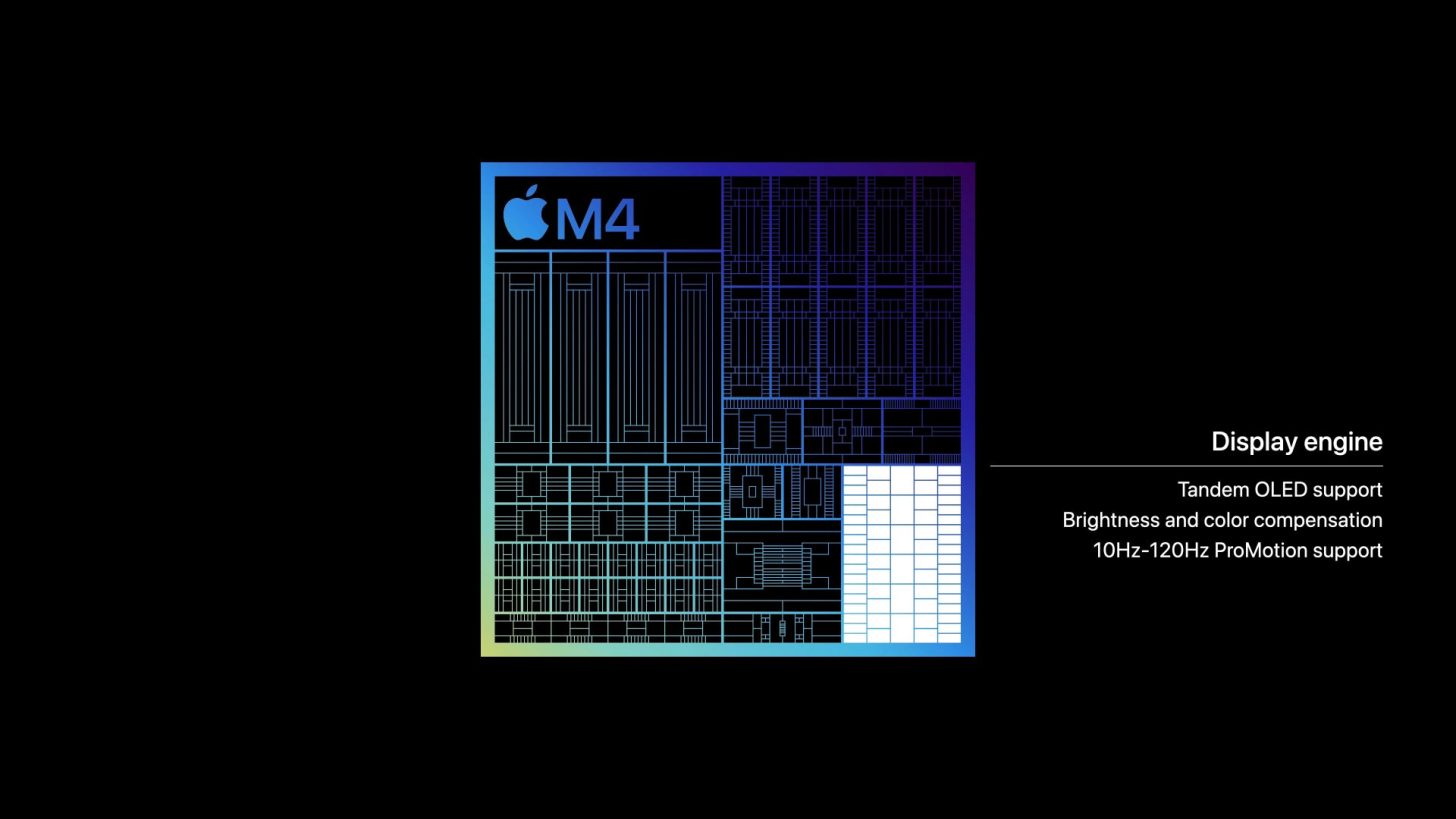Instead of using the M3 on the new iPad Pro models, Apple has skipped a whole generation and introduced a brand new silicon for its top-tier tablets called the M4. This time, the company has taken advantage of TSMC’s second-generation 3nm process, the same technology that will reportedly be used for the upcoming A18 Pro. Additionally, the new Apple Silicon comes with a slew of upgrades, along with a new Neural Engine designed to deliver enhanced AI performance. Let us get right into the details.
The M4 is the first Apple Silicon whose GPU supports mesh shading and hardware-accelerated ray tracing
Starting with the core count, Apple does not use the traditional four performance and four efficiency cores configuration for the M4. Instead, the company has incorporated additional efficiency cores, with the cluster now upgraded to a ‘4 + 6’ setup. This means that the chipset will deliver even higher multi-core performance, with Apple claiming that the M4 has a CPU that is 50 percent faster CPU than the M2. Every single core also supports enhanced, next-generation ML accelerators.

If that was not enough, let us talk about the GPU with the company stating that the new unit flaunts 10 cores. Furthermore, it is the first Apple Silicon version that supports hardware-accelerated mesh shading and hardware-accelerated ray tracing out of the box. One technology Apple introduced to the M3 was Dynamic Caching, which has retained this addition with the M4. For those who do not know, Dynamic Caching allocates local memory dynamically in hardware and in real time to dramatically increase the average utilization of the GPU.

This helps to significantly increase performance in the most demanding applications for creative professionals and games. Of course, earlier reports have mentioned that the M4 would deliver a whole new AI experience. During the official announcement, Apple mentions that the silicon sports a new Neural Engine. This block on the M4 features a 16-core design and is capable of an astounding 38 trillion operations per second, making it a jaw-dropping 60 times faster than the first Neural Engine in the A11 Bionic.
Of course, as much as we were impressed by the performance, we were highly curious about the power draw. Apple has fabricated the M4 with this attribute in mind, saying that not only does it deliver equal performance to the M2 while consuming half the latter’s power, but a similar class chip running in a PC has to consume four times the juice to deliver the same performance level. With the M4 debuting in the latest iPad Pro lineup, it is only a matter of time before the chipset arrives in future Macs, boasting a wide range of benefits over its predecessor in a different class of machines.






